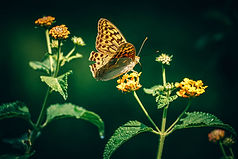
OUR FABRICS AND OTHER RAW MATERIALS
We use fine-weave nylon and polyester soft netting, both of which can be washed and sterilised and are fray and ladder resistant. Nylon netting is used as standard for all our cage and sleeve covers, it lasts for well over 12 months of continuous UK outdoor use in normal weather conditions, with minimum colour loss. For an additional cost we can also supply most of our designs to order in polyester. Our polyester netting is even finer than our standard nylon netting and can be used for the study of extremely small organisms. Please note that we hold stock items in black net only. Items ordered in white nylon, or polyester, will be made to fulfill your order and are not kept in stock; these will therefore take longer to dispatch.
Cage openings are sewn with either double or single-slider zipped access. Where fitted with a double-slider, zips can be opened at any position along the zip-line, allowing the easy addition or removal of insects, flowers, plants, or for camera use. Single-sliders allow access from one end of the cage only. We are able to sew 'windows' into bespoke products using soft PVC, and this is also used to produce our butterfly trap rain covers. For soft, integral bases (such as those in our tent cage) we use geotextile. It is lightweight, rot and mildew resistant, porous and non-fraying. For a more rigid base we use lightweight PVC board or sheeting. It is non-toxic, semi-rigid, weather resistant, and non-warping in damp conditions.
Our cage frames are made of plastic coated wire which provides a rust-resistant framework. Some frames have push-fit jointed 'legs' or support rods. This ensures our cages take up minimal storage space when not in use, and also makes them easy to transport. Tent cages use sectional fibreglass poles. Our cages are stable, sturdy, and yet easy to assemble or disassemble.
OUR PROCESSES
Sewing. This is perhaps the biggest and most complex part of the business. Many of our popular standard products take up to an hour to cut out, assemble, and sew. Of course with bespoke items you also have the design aspect, and it can take two or sometimes three hours to design the most complicated commissions. All our work is done manually (with the aid of a sewing machine!), and therefore nets are subject to +/- 5% tolerance.
Metal work and forming. All our wire is bought by the 25kg coil. This means much of it has to be straightened, cut to length, and finished before use. Other components are hand curved and formed to provide the correct shape used in our frames and holders.
Cutting and routing. The bases used in our table cages and moth-trap shields are rough cut, shaped, bevelled and sanded. The PVC we use can also be cut using a domestic jig-saw should you need to make any species-specific adjustments at home.
PRODUCT USE AND SUITABILITY
Our cages, nets and traps were originally designed for the study of butterflies and moths, but are also suitable for the study of a variety of other insects. However they are not suitable for use with or exposure to species which are likely to bite, claw, or cause similar failure of fabric products. Any fabric item can be damaged by piercing, cutting, or abrasion/rubbing in the environment in which it is being used. To avoid damage we recommend that you carefully locate your cages or traps to avoid uneven, sharp, or rough surfaces or objects, and also minimise the potential for contact with predatory creatures or aggressive species. Climate specific tests, in a controlled environment, on our fabrics have shown they can withstand a minimum of 12 months UK weather. However due to the wide range of other parameters outside our control we are unable to advise on, or guarantee the durability of, our materials or products in any given physical environment or for any specific purpose.
We sell small samples of material for testing purposes so that customers can test (or otherwise consider) whether our material is fit for their specific purpose before making their main purchase.

